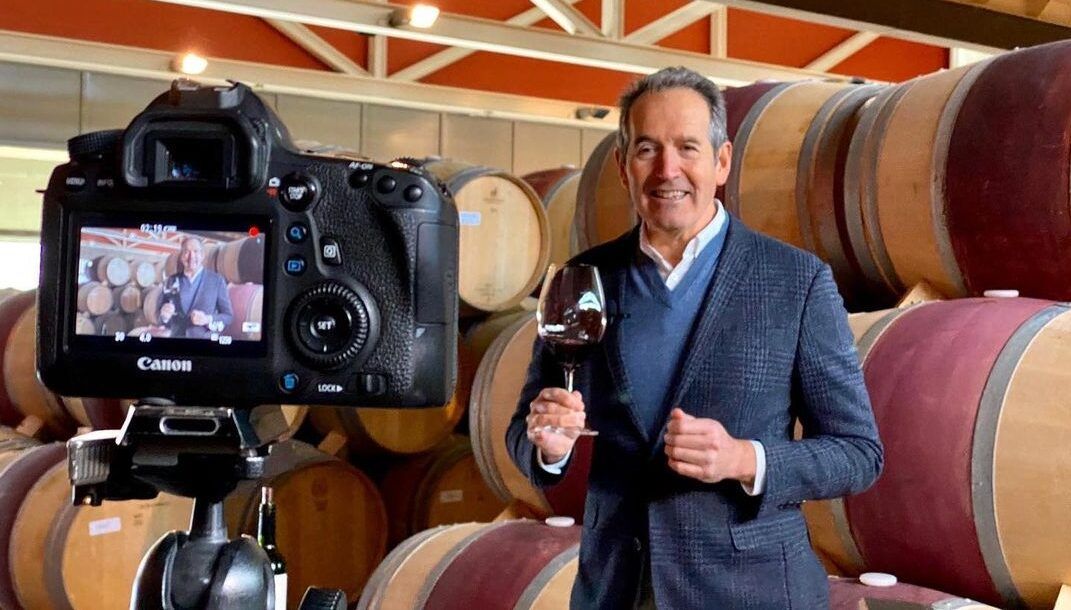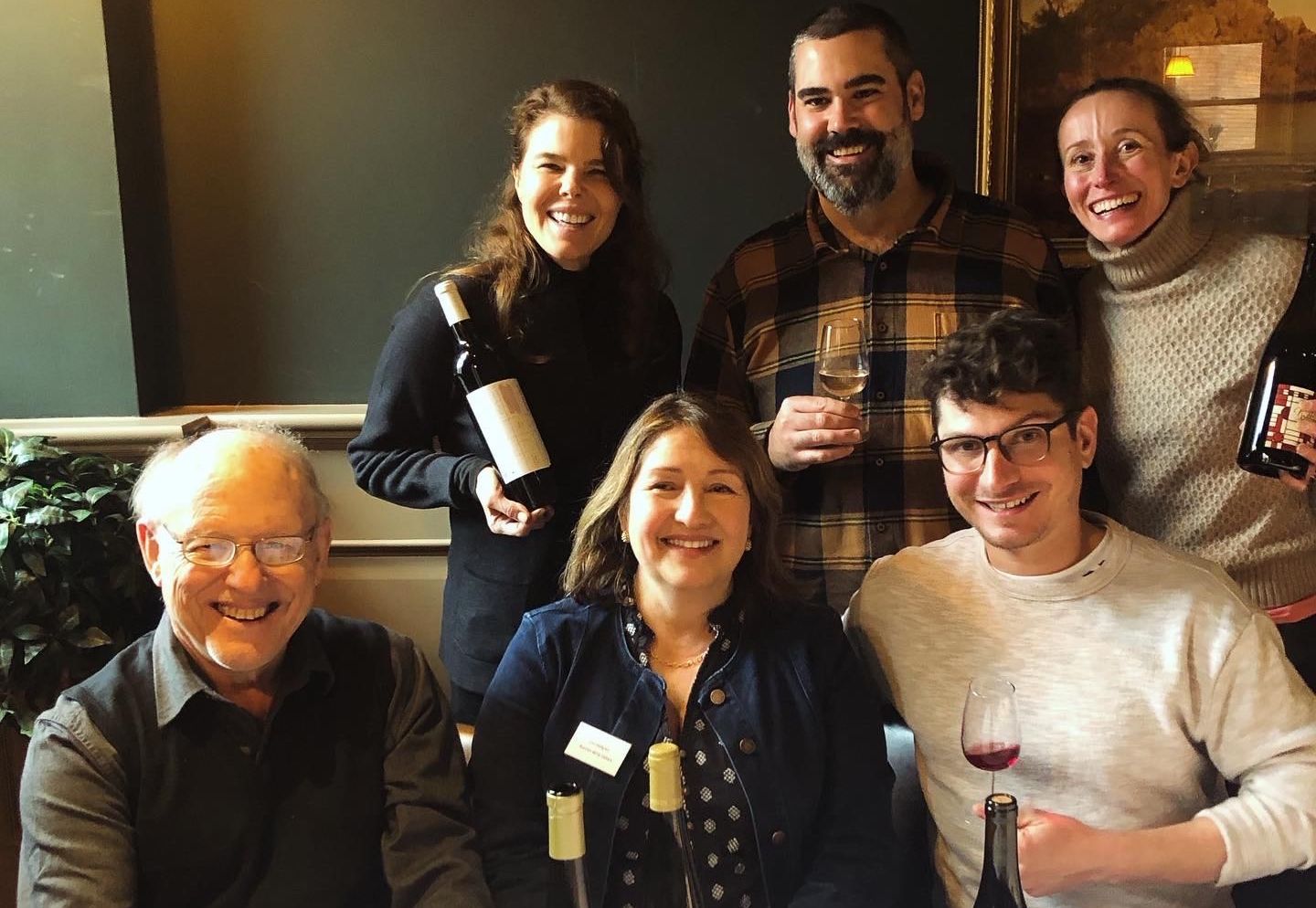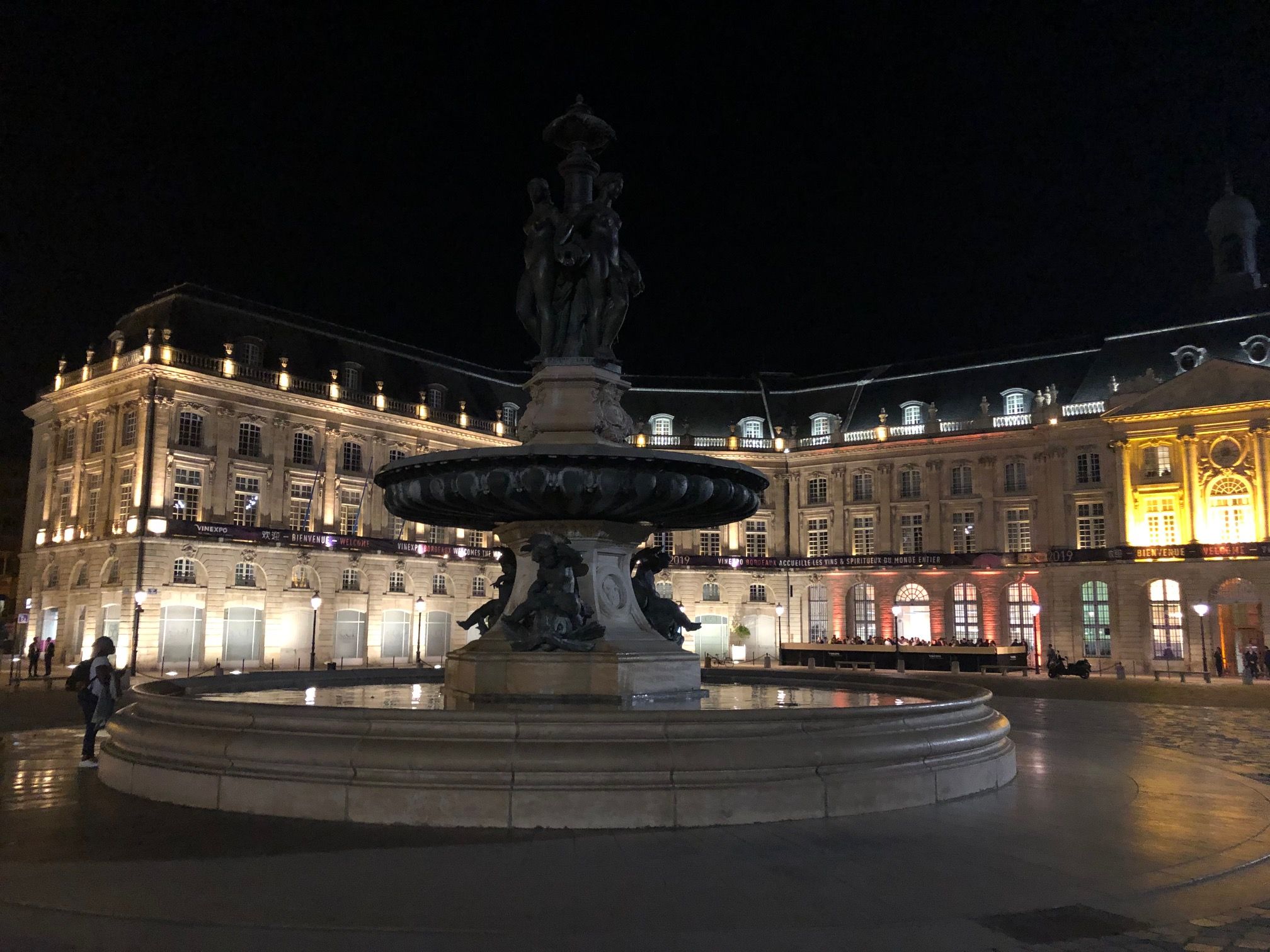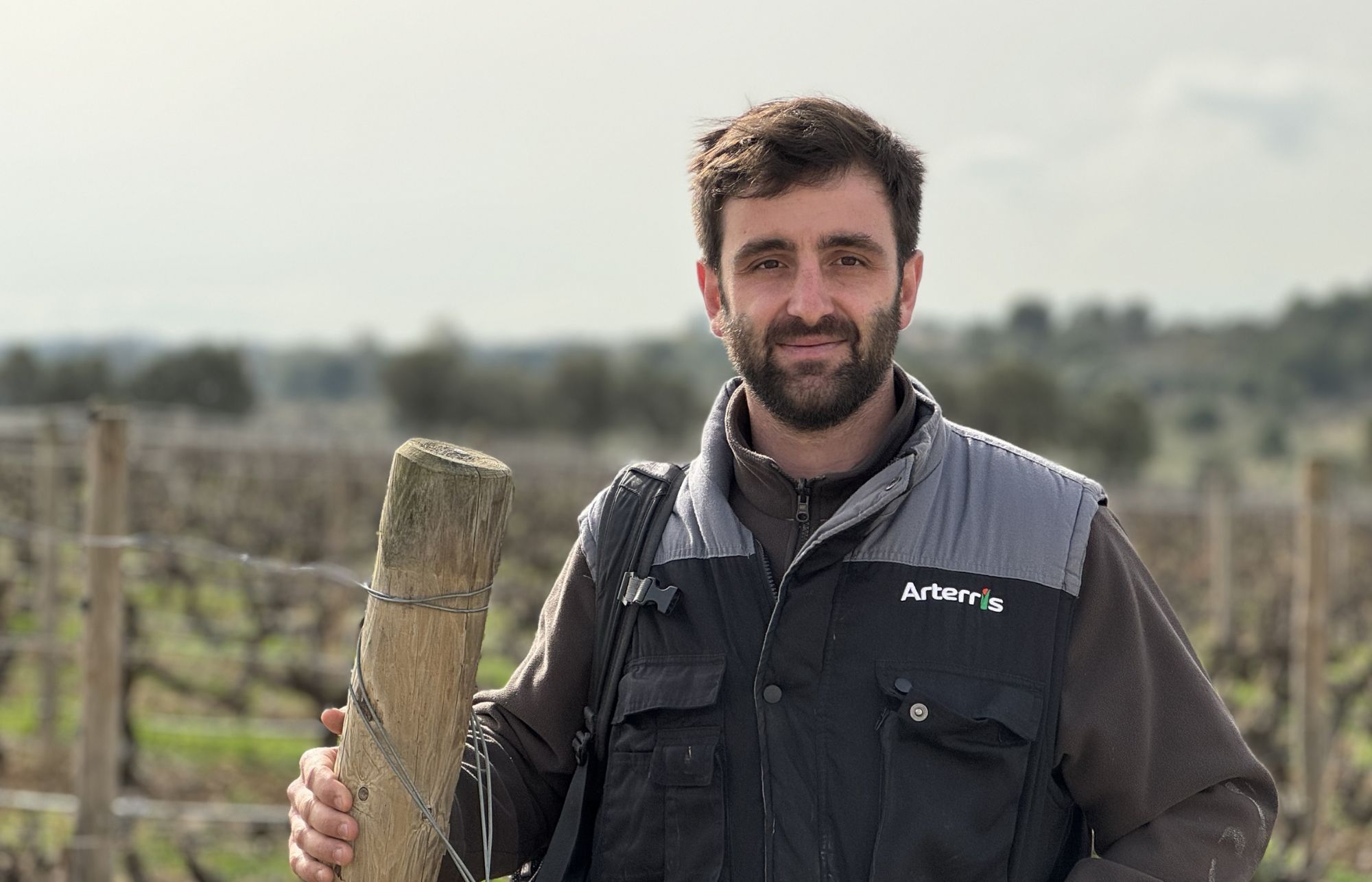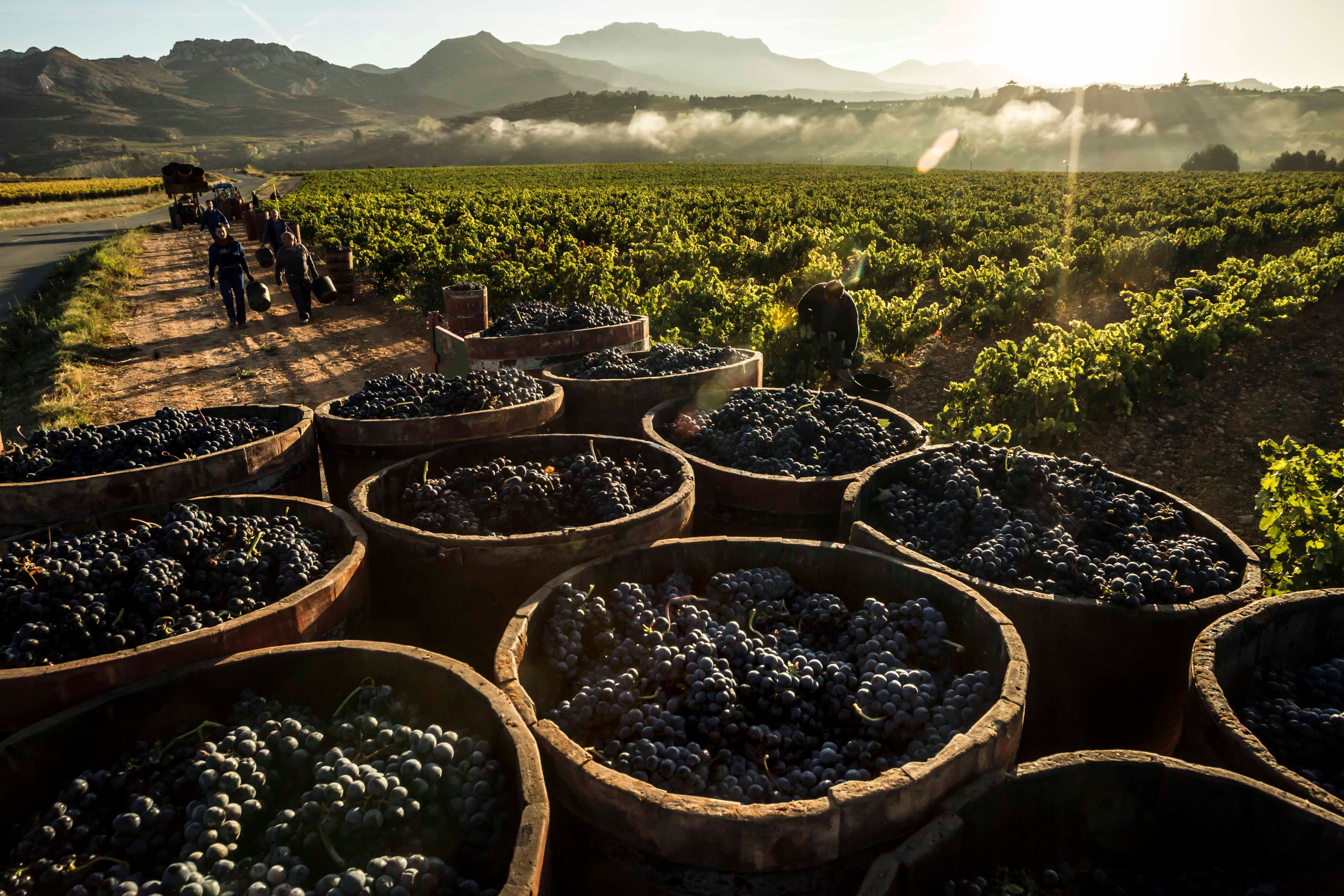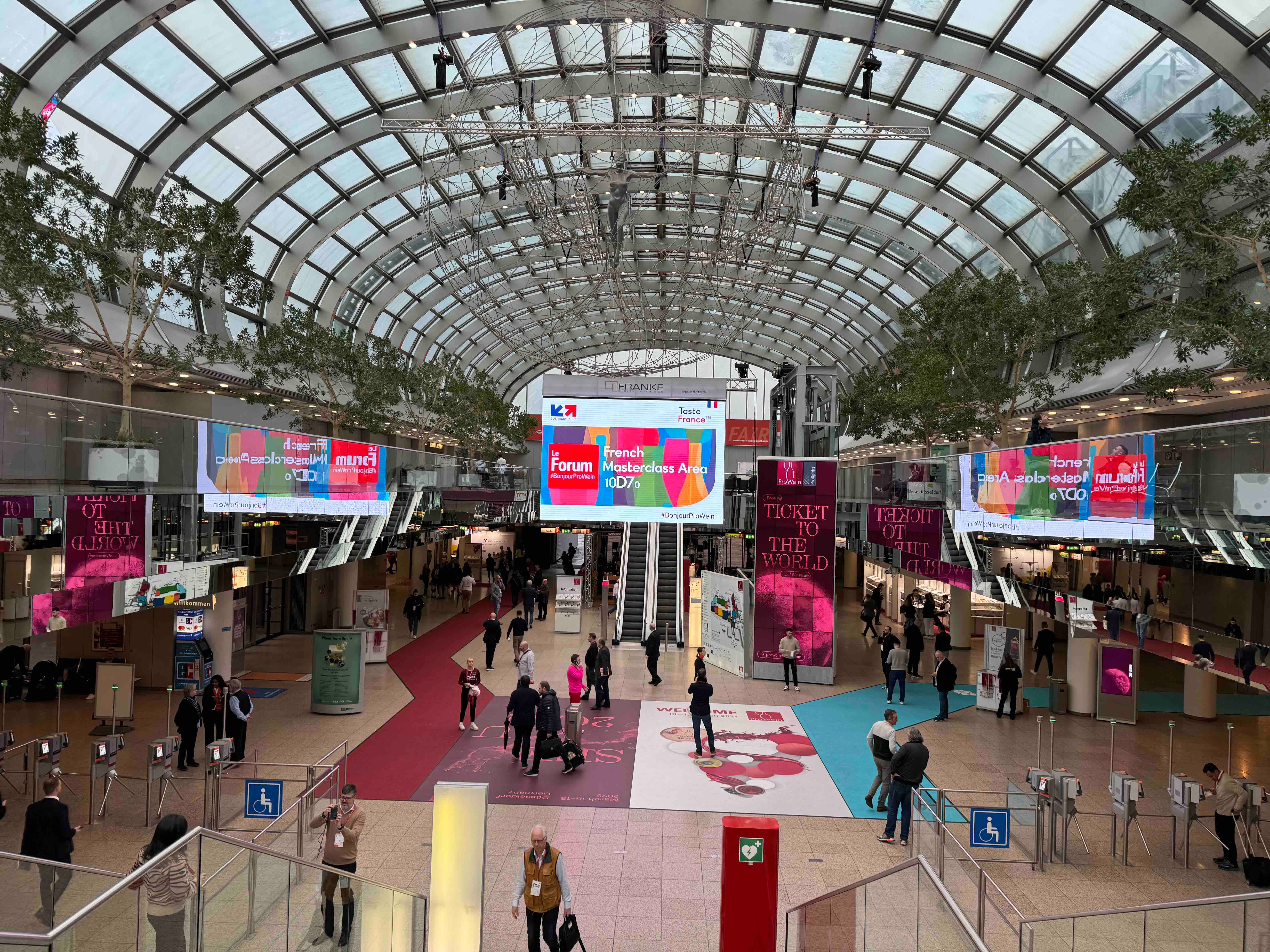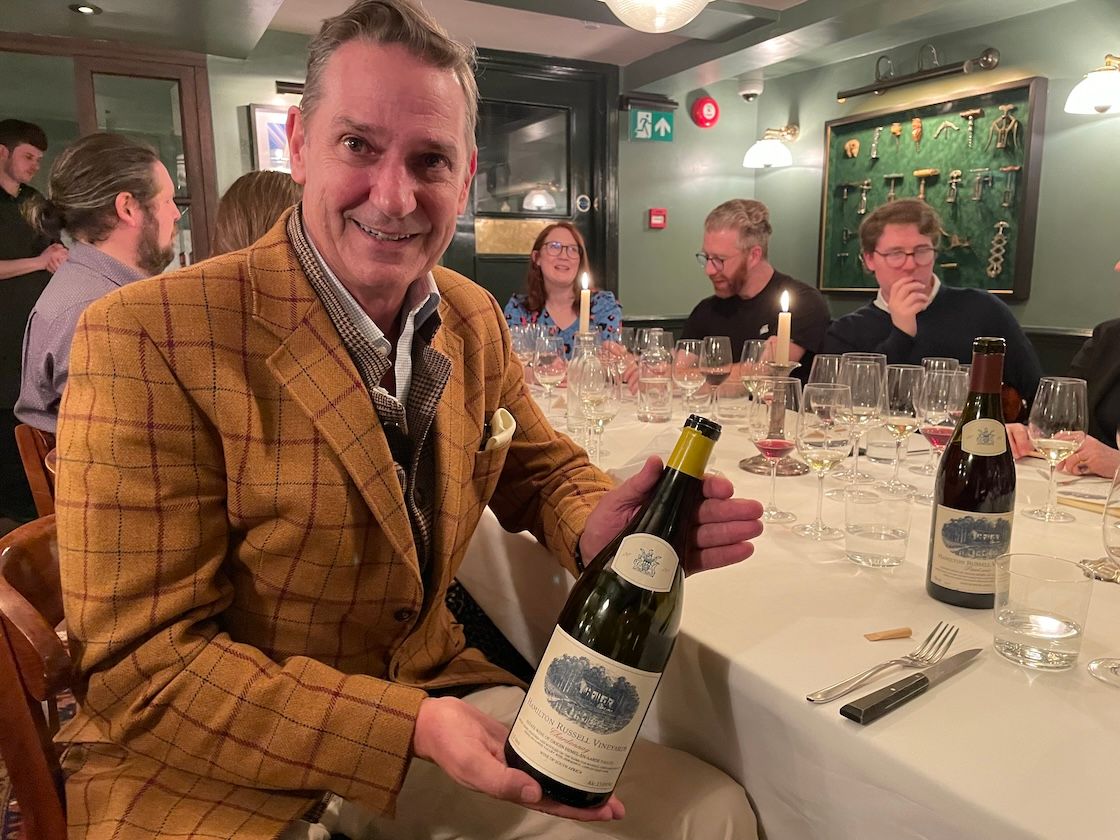“I don’t agree that ‘single vineyard’ is the top of the quality pile,” Santolaya says, justifying the Bodegas’ approach to making Cirsion 2018.
“There is an idea in the Spanish press that a wine has to be undrinkable when it comes out, and the general feeling when Cirsion first came out was that it was a wine that wouldn’t last.”
Agustín Santolaya, the managing director of Bodegas Roda, is reflecting on Cirsion 2018, the new vintage of his estate’s top wine, and how it is a wine that seems to break all the rules.

Agustín Santolaya and Victor Charcán (r-l) from Bodegas Roda, Carson 2018 launch, April 8, 2021
Cirsion is a super-premium Rioja that only spends eight months in barrel in a region where the barrel is king – Gran Reservas, remember, need to spend at least two of their five-year ageing process in barrel. And they are generally pretty tough to drink for quite a few years after that.
Apart from its approachability in youth, Cirsion is also aged in new French oak and not American as traditions dictate.
“I have nothing against American oak – we use some in Ribera del Duero – but rather I think that the French oak matches perfectly the aromatics and tannic structure in the range of our wines.”
“It is our landscape we wanted to transmit in the wine rather than a forest from some other part of the world,” Santolaya adds, “we also want the wine to be accessible on release but have good ageing potential.”
It is the reason that they went with a thistle as the symbol of Bodegas Roda … “it is not a flashy flower – it has discreet elegance – but when dried it ages for ever.”
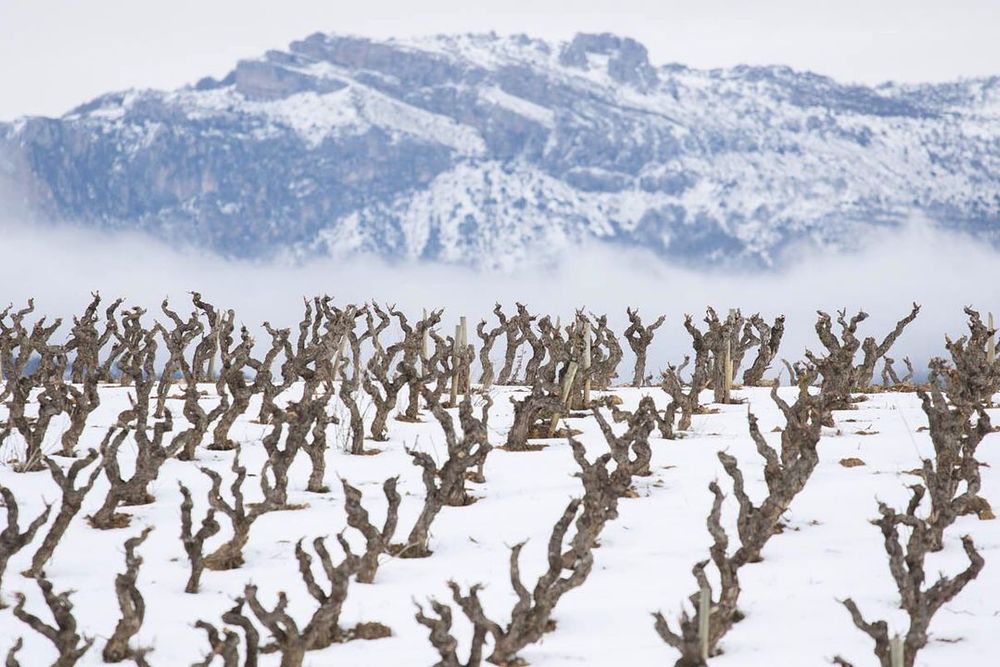
One of the 30 vineyards Roda owns around Haro
Discovering the special vines
Bodegas Roda was only founded in the late 1980s, with 1992 being the first vintage released in 1996. It was in the early 1990s that the idea of Cirsion first came to the team – while they were walking the vineyards, they discovered that certain bunches of Tempranillo grapes were particularly ripe.
“When tasting berries from different vines in very old vineyards we noticed that berries had different levels of ripening – some were very ripe with very silky tannins. The following year we repeated the test at the same vineyards and realised it was the same plants delivering the same degree of ripening,” Santolaya says.
So in 1997 they decided to make a small batch with some of the standout vines from a selection of their vineyards. They only made a single barrel, but were so impressed with the results, that Cirsion was born.
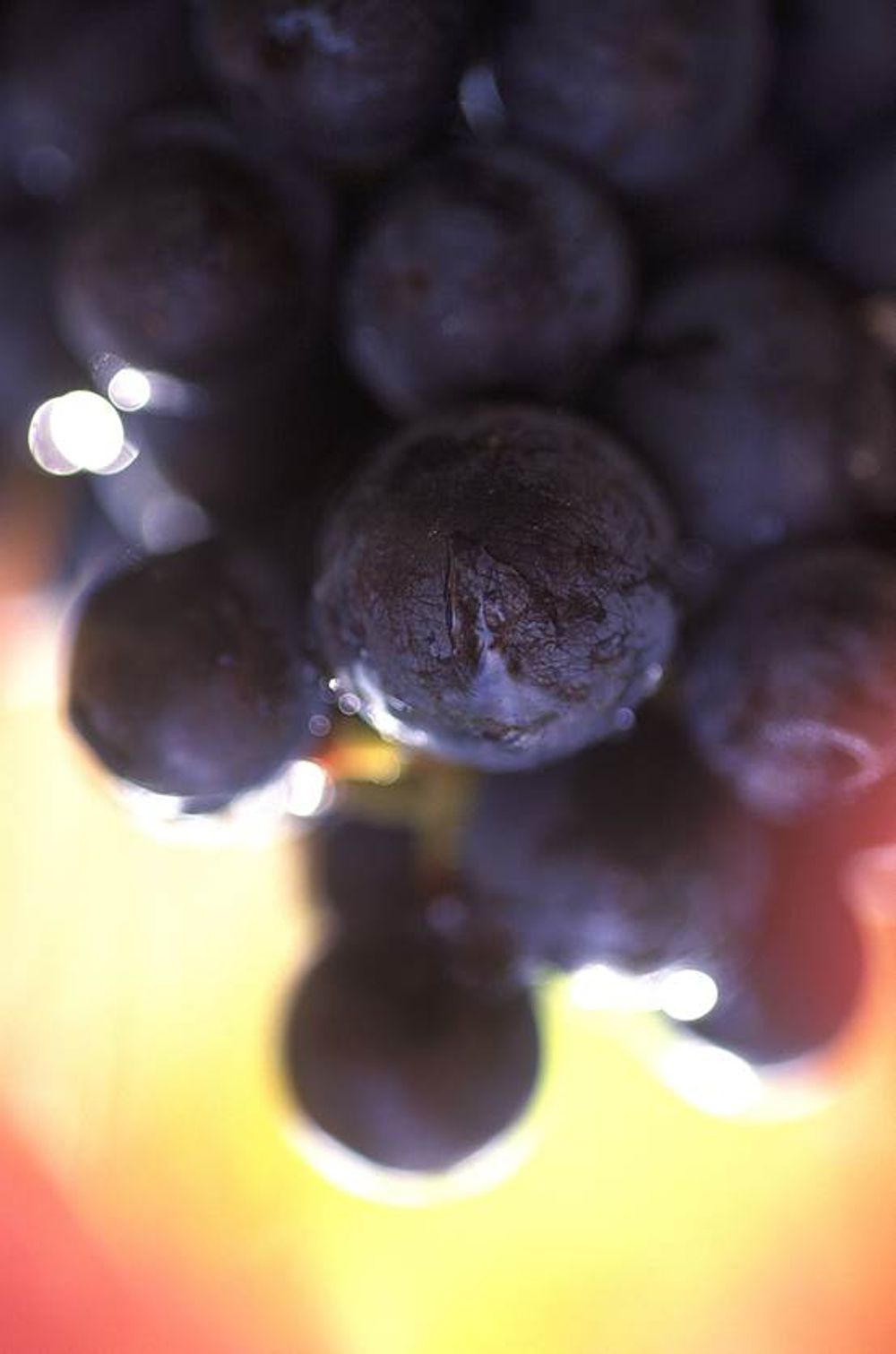
The right Tempranillo vines are identified by the leaves going brown first and the pattern on the waxy ‘bloom’ of the grape’s surface
The wine comes from these same old, low-yielding vines, that are dotted throughout their 30 different vineyards that surround Haro; it is for this reason that not only can Cirsion not be classified as a Gran Reserva (because of its wood regime) but it also cannot be classified as a Viñedos Singulares, the new single vineyard classification that was announced four years ago by the Rioja Consejo.
“I don’t agree that ‘single vineyard’ is the top of the quality pile,” Santolaya continues.
“I do love the idea of single vineyards (we vinify every vineyard seperately) but our approach is by the combination of those single vineyards, we can create something more complex and more perfect – we can bring something magical to the wine… the Cirsion approach offers a more panoramic view of the Rioja landscape.”
Cirsion is only made in the very best vintages and there have only been 17 vintages of the wine released since the first one hit the market in 1998. Through minimal intervention, Roda likes the wine to truly reflect both its terroir, and the vintage variation – old vines have lower yields and are more susceptible to reflect that variation in the growing season.
To counter the effects of global warming, the estate has made the decision with the new Cirsion 2018 vintage to add 10% of Graciano to the final wine – the same selection process of fast-ripening old bush vines being applied as with the Tempranillo.
“The reason why we used Graciano has to do with global warming,” says Santolaya, “the ripening is getting better and better but in some years the acidity is threatened in the Tempranillo and Graciano delivers that acidity in order to keep the freshness in the wines.”
So how is the new Cirsion 2018 vintage tasting?
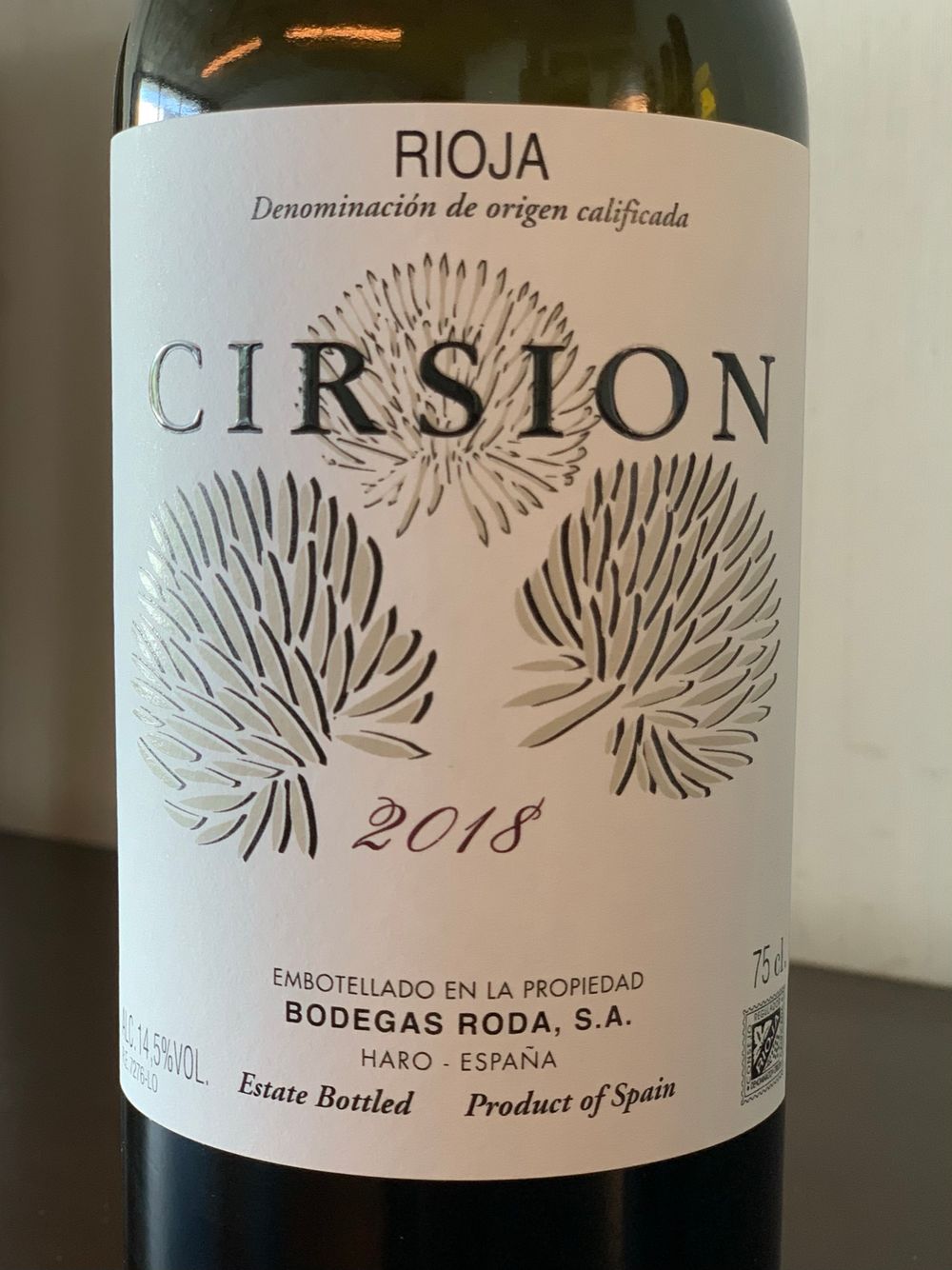
Bodegas Roda, Cirsion 2018, Rioja DOCa
2018 was a very wet year with a lot of Atlantic influence, which you detect on the weightlessness of the wine and its salinity. The wine is approachable now although built for the long run, the Graciano helping with that.
To look at, the wine is opaque, medium ruby with purplish red rim; the aromatics are sumptuous and complex – an explosion of black fruit, with nuances of red fruit, violets, iodine, new wood, dark chocolate and wet earth. The palate is medium bodied, fresh and light on its feet, a melange of autumn black fruits, blackberry, dark plum, a dusting of cocoa powder on the concentrated, long finish. There is a good deal of intensity, ripe fine-grained tannins, finishing with a twist of blood orange and balsamic. Stunning.
Tasting the new wine alongside Cirsion 2010, 2009 and 2004

Bodegas Roda Cirsion 2010, Rioja DOCa
Similar to 2004, 2010 was a cool year rated as Excellent; there was also millerandage in the bunches of grapes which is apparently what helped make 2001 so spectacular. The bunches were smaller in 2010, however, and July and August were very hot which kept the yields low.
The wine is drinking very well indeed, to look at it is opaque cherry red, the nose has got a smoked jamon quality amongst the profusion of black fruits. The wine is very full on the palate with good intensity, ripe silky tannins, slightly drying on the finish but with real class, elegance and a freshness that keeps it all feeling so light in the mouth.
Bodegas Roda Cirsion 2009, Rioja DOCa
2009 was a warm year, close to 2003, with the summer in particular hot and dry which resulted in some water stress in the vines which translates to the finished wine in a dusty dryness on the finish.
Deep ruby red, opaque with bricking on the rim. It is hard to place this in Rioja from the nose alone – aromas include blackberry, baking spices, potpourri, dark chocolate, earthy and leathery undertones. On the palate the wine is silky smooth, the tannins are ripe and yielding, there are suggestions of chocolate and mint, black fruits. Feels more evolved than the 2010, but will still keep evolving for at least another decade.
Bodegas Roda Cirsion 2004, Rioja DOCa
2004 is called the “miraculous harvest” in Rioja because the weather was so severe, particularly in August and September when there was hail and heavy rainfall. The wine itself is pretty miraculous too and augurs well for how some of these top vintages will age. Deep ruby with red rim; the nose is broody, red fruits peeking through the black, some signs of evolution – cedar wood and cigar box mix well with the chocolate notes. Medium to heavy weight in the mouth, good volume; the acidity keeps it elegant and it still feels fresh as a daisy, beautifully balanced with great finesse. Quite outstanding.
Cirsion 2018 is imported into the UK by Mentzendorff, which is a supplier partner of The Buyer. Find out more by clicking here.
